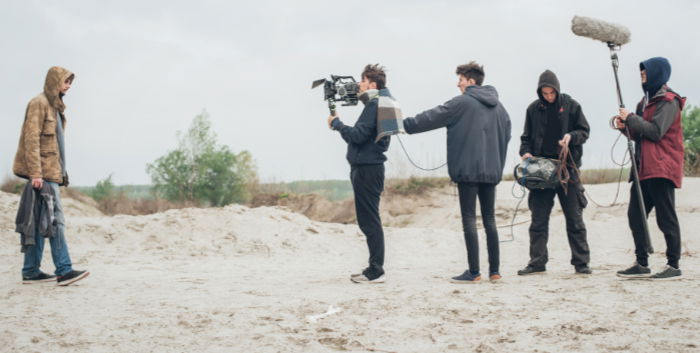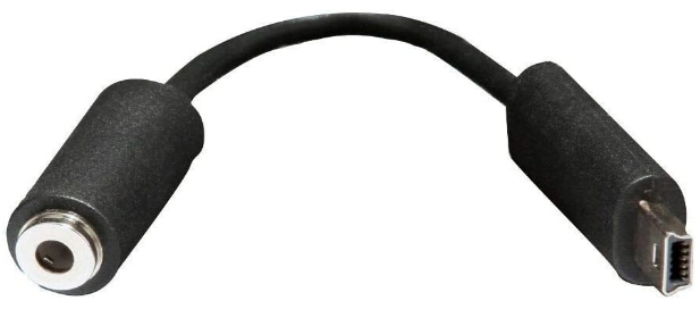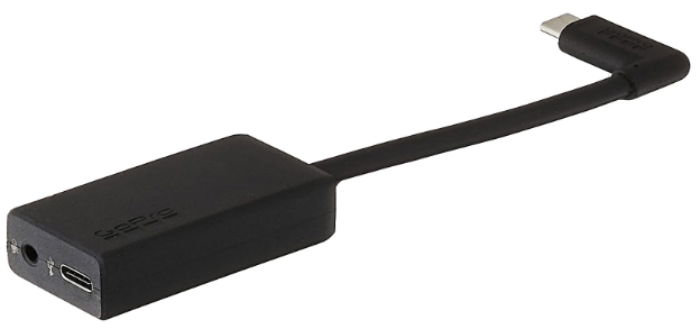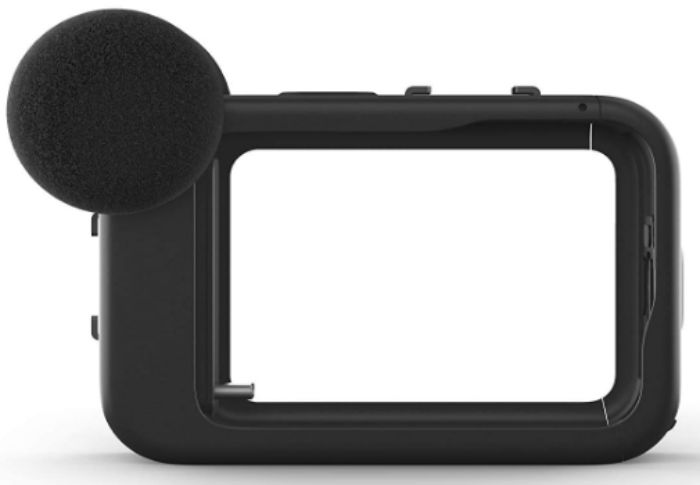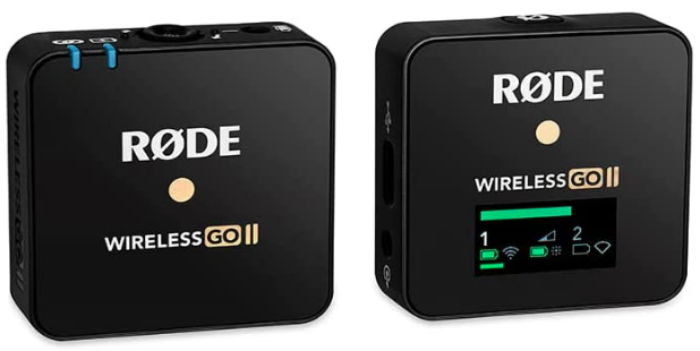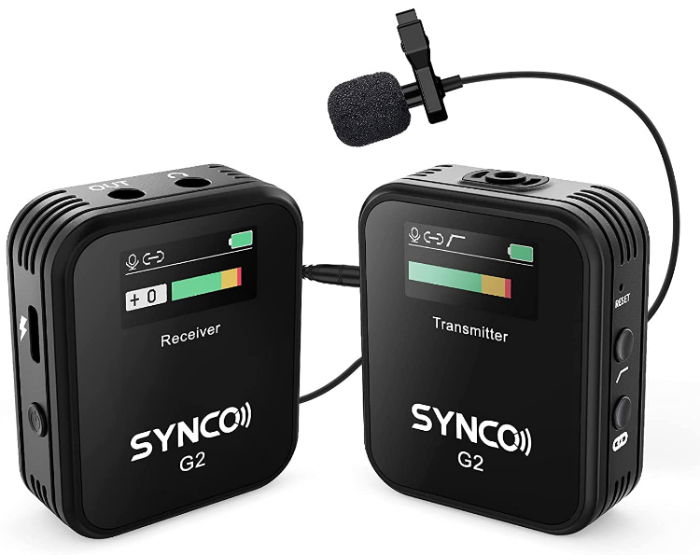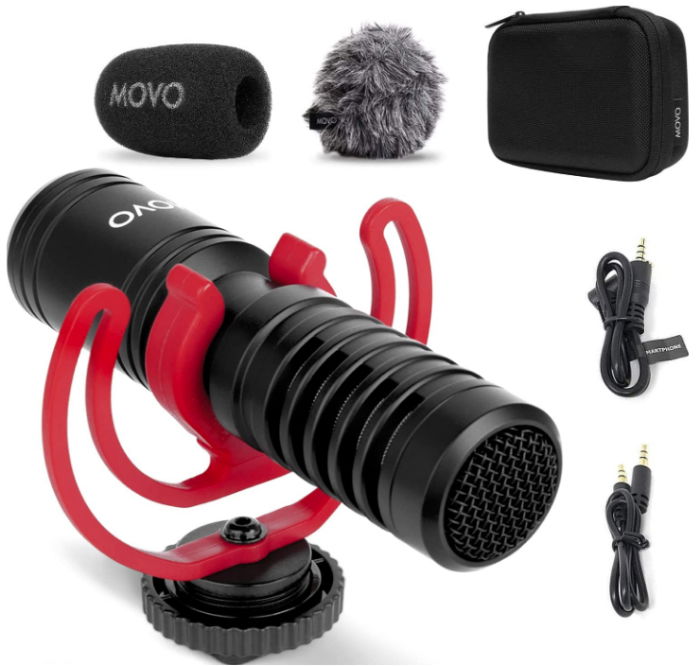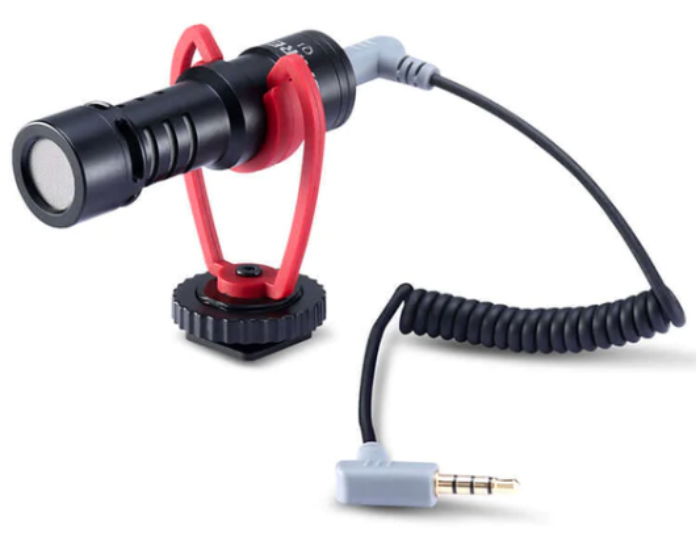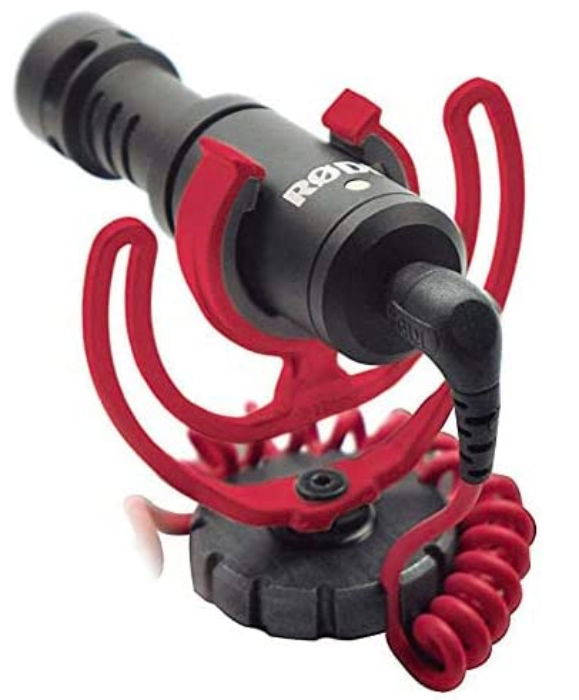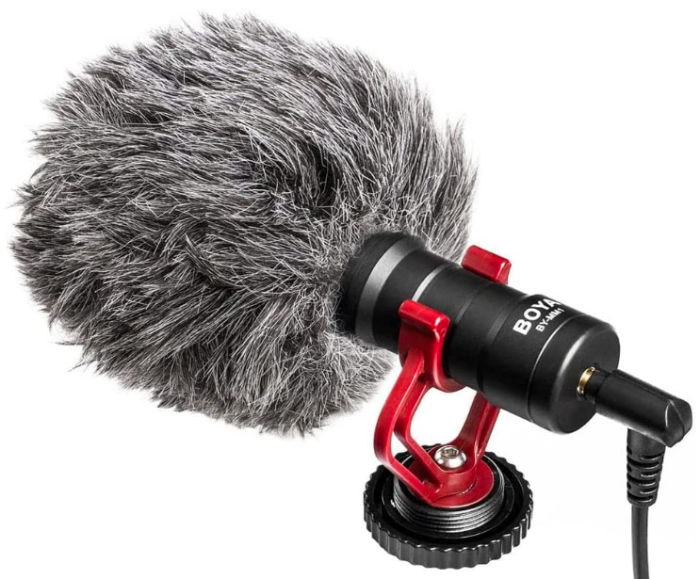With your action camera, the solution is not as simple as buying an external microphone. You will need an action camera microphone attachment. This is because most action cameras don’t have a microphone input. Do you want to boost your sound quality to the next level by improving audio quality? Then read our review of the best action camera microphone attachments. [Note: ExpertPhotography is supported by readers. Product links on ExpertPhotography are referral links. If you use one of these and buy something, we make a little bit of money. Need more info? See how it all works here.]
How to Attach an Action Camera Microphone Attachment
The first obstacle to overcome is the lack of an audio jack. You need to get your audio signal into your action camera. Action cameras lack an external microphone input port. This means you will need a microphone adapter to use an external microphone. But with some older or cheaper action cameras, there might not even be an option available. This review assumes that compact usability is a priority for action cameras. All these external microphones will connect to an audio recorder, but that isn’t the focus here. (As a side note, an audio recorder takes you to the next level for better sound quality. Mainly because it improves the microphone pre-amp enormously.) Assuming this isn’t the case for you, then let’s proceed.
External Microphone Adapters for GoPro Cameras
For a GoPro HERO3 or HERO4 action camera, you will need a 3.5mm to USB mini B adapter to attach an external microphone. This might just be an unsophisticated dongle. But it will allow you to connect an external microphone to your GoPro.
For the GoPro HERO5 and later, things become a bit simpler. GoPro makes an adapter that connects to the USB C socket and provides a 3.5mm and USB C socket. This is the simplest solution from the HERO5 to the HERO7 action cameras.
The neatest product for the HERO8, HERO9, and HERO10 is GoPro’s own Camera Media Mod. (Although similar, the HERO8 Media Mod does not fit the other two action cameras.) The Media Mod is a wraparound adapter that connects to the USB socket on the action camera. It adds a directional microphone, two cold shoe mounts, and 3.5mm, USB C, and mini HDMI ports. The integral external microphone is already better than the action camera’s own mic. The mount and the 3.5mm socket add a tremendous range of possibilities.
But there are two downsides. The mod isn’t waterproof and will compromise the action camera’s waterproofing. This means you can’t use it if you think the camera might get submerged. It also adds a layer of complexity to changing the battery, as it has to be completely removed from the camera to do so. An alternative is the Ulanzi range of GoPro action camera housings. They don’t have the integral external microphone found on the Media Mod. But they do offer more flexibility for mounting accessories. The housings allow easier access to the battery and SD card. They also provide both tripod screw and GoPro finger mounting options. But you will still need a USB to 3.5mm adapter.
External Microphone Adapters for DJI Osmo Action and Action 2
Generic dongles with a USB C to 3.5mm should work with DJI Osmo Action and Action 2 cameras. But it’s a good idea to always check compatibility before you buy. The CYNOVA Osmo Action Dual provides a more modular-looking solution and adds a USB C port. As with the GoPro Media Mod, using the adapter compromises the waterproofing.
So, we’ve sorted out the adapter situation. Now let’s look at choosing an external microphone for your action camera footage.
What is the Best Action Camera Microphone?
We’re going to look at two main types of microphones for your action camera—shotgun and lavalier. Which one is right for you will depend on your needs. Microphones collect sound in similar ways but are designed for different purposes. An action camera microphone will be omnidirectional. This means it gathers sound from everywhere. But realistically, these microphones capture sound from a 180º field. A shotgun mic gives you a more directional sound. It will also deliver improved sound quality and better wind noise suppression. It will exclude or reduce sound coming from the side and rear, focusing on what is directly in front of the mic. A lavalier microphone collects sound much like the action camera mic. Its advantage is it gets you up close for interviews or narration. This improves ambient noise reduction. With an action camera, it makes no sense to tie yourself down with wires, so we’ll just look at wireless solutions.
How to Choose a Lavalier Microphone
The lavalier microphone is sometimes called a lapel or tie-clip mic. It is familiar to us all from television. What isn’t always obvious is that they are used in dramas and films, hidden from view. Audio professionals like them because you can place them close to the sound source. The lav mics for action cameras we have chosen for this review look different from TV ones. This is because they combine the transmitter and microphone in one unit. Not so good for TV, but great for convenience when on the go. It means there are no trailing wires, which is important for the action camera user.
7 Best Action Camera Microphone Attachments
1. Rode Wireless Go II
Rode is a well-respected manufacturer of audio products. And the Wireless Go II is a great example of why they’re so popular. There are two versions, with either one or two transmitters. They are compact, square, and easily portable. The transmitter attaches to the subject’s clothes, and the receiver mounts on a cold or hot shoe. You will also need to connect the receiver to the 3.55 input port of your chosen adapter. The transmission range for the wireless is quoted as 660′ (200 m). So realistically, anything closer than 330’ (100 m) should never be a problem. The transmitter provides onboard recording. This means you won’t lose the audio even if transmission drops out. The Wireless Go II uses Rode’s safety mode. This records a second audio track at -20 dB. The transmitter saves your sound at a lower volume without clipping, even if you get overexcited as you plummet out of a plane. The Rode phone app allows control of safety mode and other features. The receiver also has a clear color LCD screen for monitoring several parameters.
2. DJI Mic
The DJI Mic is specifically designed for the DJI Osmo Action. It comes with a cold shoe adapter allowing you to use it with other cameras, including your action camera. There are two microphone/transmitter units and a receiver. And they can all be safely stored in a solid charging carry case. This makes transporting, pairing, and charging the units simple. You can clip the transmitters to clothing. If that’s not possible, they also have a magnetic mount. This is a useful solution for T-shirts or unbuttoned shirts, for instance. The battery life is 15 hours and will far outlast the recording time on any action camera. And the included deadcats will reduce wind noise. Like the Rode Wireless Go II, the DJI Mic has onboard recording and a safety track (of -6 dB). It also has adjustable gain levels, so you can match the receiver’s output to the needs of your action camera.
3. Synco G2
I’m including this as a contender in the budget external microphone field. The Synco G2 operates on the same principle as the previous microphone systems. What it lacks is the onboard recording, so if your audio drops, then you lose that section of the recording. And it doesn’t have a safety track either. Listening to the Synco G2 and Rode Wireless Go II side-by-side, the Rode has superior sound quality. There is less noise, and the sound is richer. The Rode provides better audio quality than the Synco G2. All things are relative, though. The Synco will give you better voice recording at a distance than the action camera’s built-in microphone. If you don’t want to spend the money on the Rode (or the DJI, which is even more expensive), then the Synco is worth a look.
How to Choose a Shotgun Microphone
A shotgun microphone is more directional than lavalier mics. It’s designed to capture the sound coming from the direction it’s pointing in. This improves audio quality by reducing unwanted external noise. A shock mount will reduce the noise transmitted through the action camera housing. And a deadcat will help tackle wind noise. These are handy features given how you use an action camera. If you have gone the GoPro Media Mod route, then you already have a shotgun mic (of sorts). It is by far the smallest option and is switchable between front and rear-facing. In most cases, it will offer higher audio quality than the built-in mics. But it’s not the same as an external microphone. The supplied foam windshield will help with wind noise, but not as much as a deadcat.
4. Movo VXR10 Pro
The Movo VXR10 Pro shotgun microphone is a shock-mounted compact shotgun mic. The mic comes with cables to connect to your action camera or a smartphone. It also comes with a travel pouch and a deadcat windshield. The Movo VXR10 Pro has a richer sound with less high-frequency response than the Rode. The downside of this is that in very windy conditions, the Movo tends to pick up too much wind noise. This is true even with the deadcat installed. This might be a problem, given that action cameras spend so much of their time in the great outdoors. At this price, it’s no surprise that there’s no high-pass filter or gain control. But there is a headphone socket so you can monitor your recording.
5. Sairen VM-Q1
I’ve only recently come across Sairen. But the VM-Q1 microphone is attracting some positive reviews. The mic comes at a very low price. It is very compact and comes with a shock mount, deadcat, and foam windshields. Sound quality is a mixed bag, as at least one reviewer found that the cables included with the mic were very noisy. That being said, with a cable upgrade, the sound is impressive for the price bracket. And again, remember, even using a budget mic like this will significantly improve the audio quality of your video recording. The Sairen VM-Q1 does not have a headphone jack, so you won’t be able to monitor the sound on the go.
6. Rode VideoMicro
Rode is a dominant force in the world of vlogging and YouTube. Partly because they have a wide range of microphones. It seems the Rode “sound” seems to meet the expectations of content creators and consumers. The VideoMicro can sound a little lacking in lower frequencies compared with others. This is because the frequency response almost completely eliminates the sub- 100 Hz range. This is great for subduing traffic noise. It also makes the mic very effective in windy conditions. This is especially true when using the included deadcat windshield. The human voice largely relies on the higher frequencies as well. Perhaps the affection for this brand is because Rode captures speech clearly. It also allows it to cut through the background clutter.
7. Boya BY-MM1
Regarding sound quality, it is hard to tell the difference between the Rode VideoMicro and the Boya BY-MM1. However, your wallet will notice the difference as the latter is roughly half the price. The BY-MM1 has the extras we would expect from this type of microphone. It comes with a deadcat, shock mount, cables, and carry pouch. The BY-MM1 is a solid performer, and I prefer the sound from the Boya to the Rode. But the slightly inferior performance in the wind might be a deciding factor for you.
Conclusion
Let’s remind ourselves why we’re looking at external microphones. An external microphone significantly increases the sound quality of your video recordings. This is true in almost any circumstance. You need to consider the type of recording you do, the conditions you do it in, and your budget. This will determine which of these external microphones will be right for you. For simplicity and ease of use, the Rode Wireless Go II is an excellent choice for a lavalier microphone. If you have the extra money, the DJI Mic is a really attractive choice. The charging travel case and magnetic mounting options are great features. With a shotgun microphone, the choice is balancing performance with personal preference. My own choice would be the Boya BY-MM1 because of the richness of its sound. The best action camera microphone attachment for your needs will be a balance between performance, price, and personal preference.
